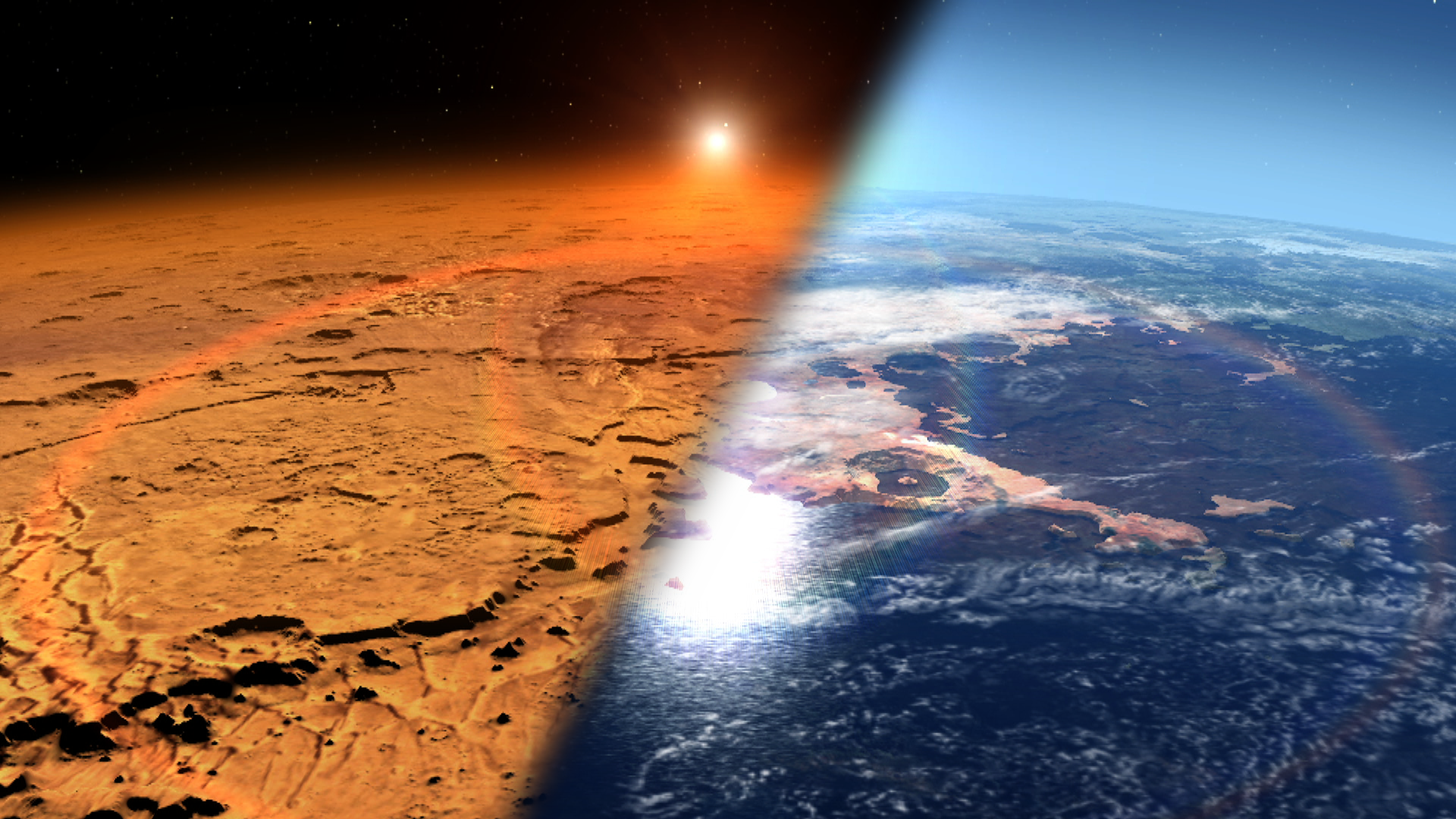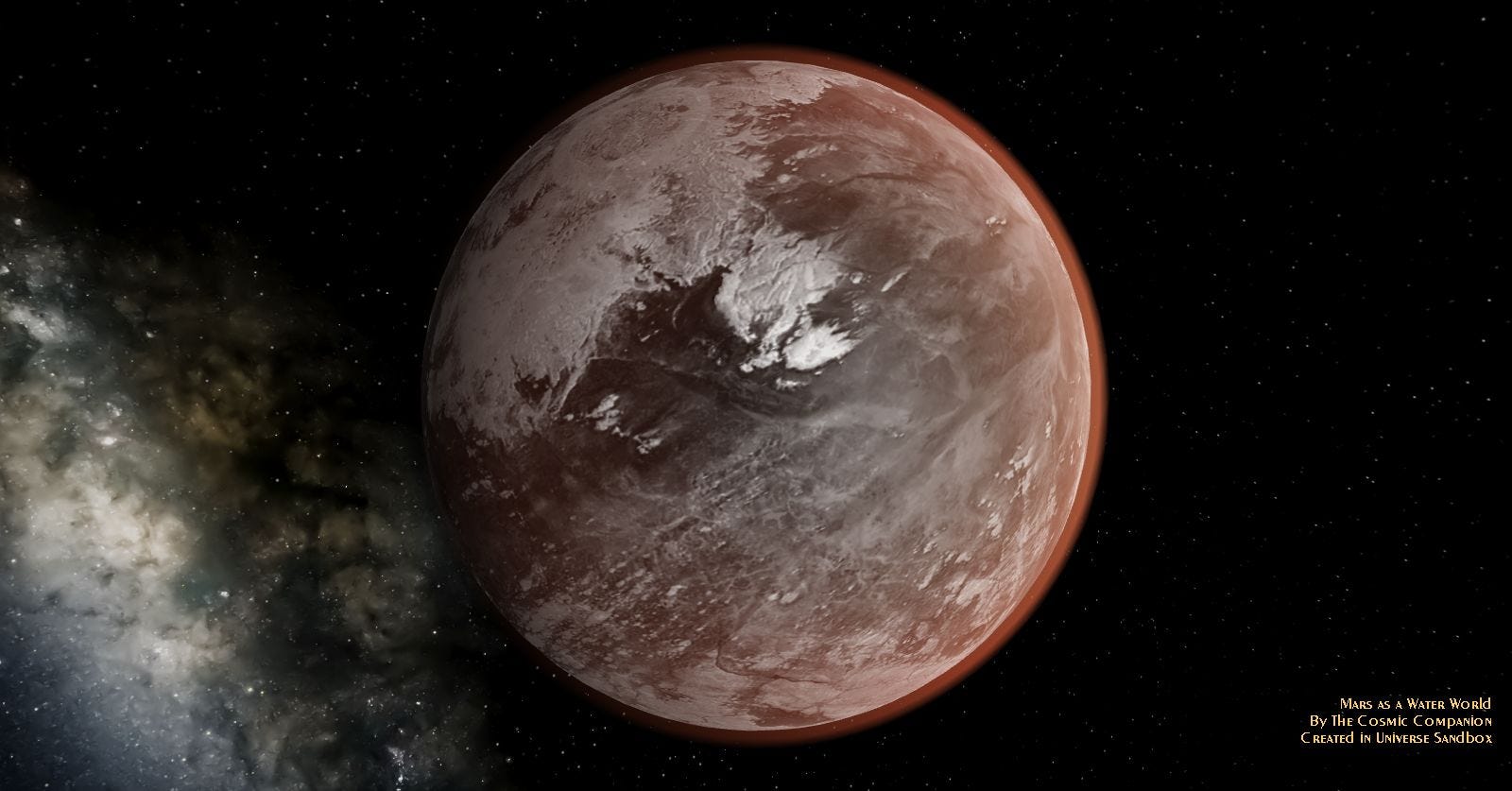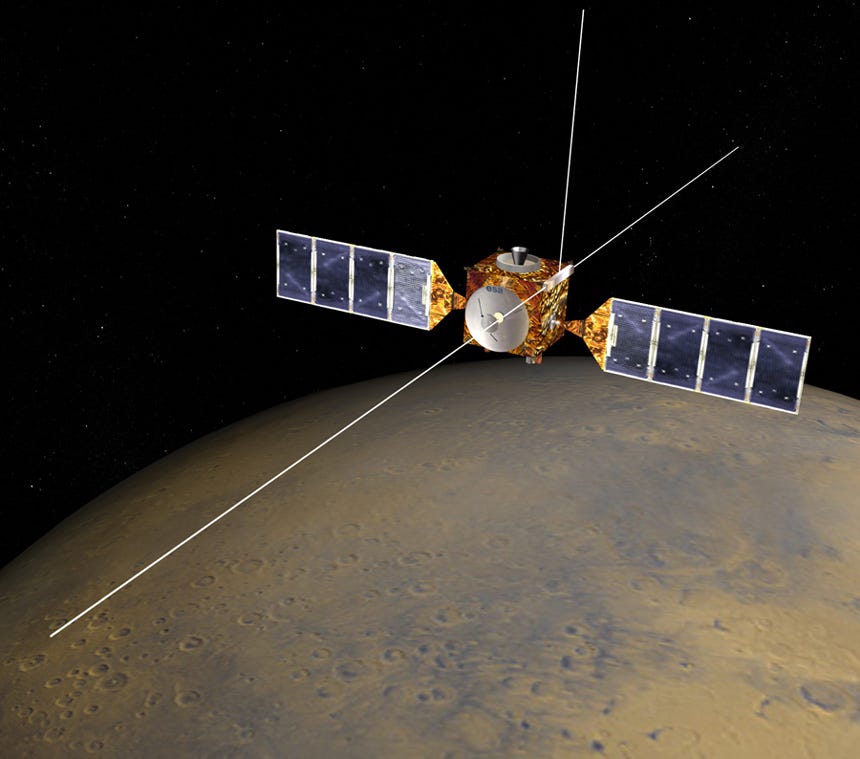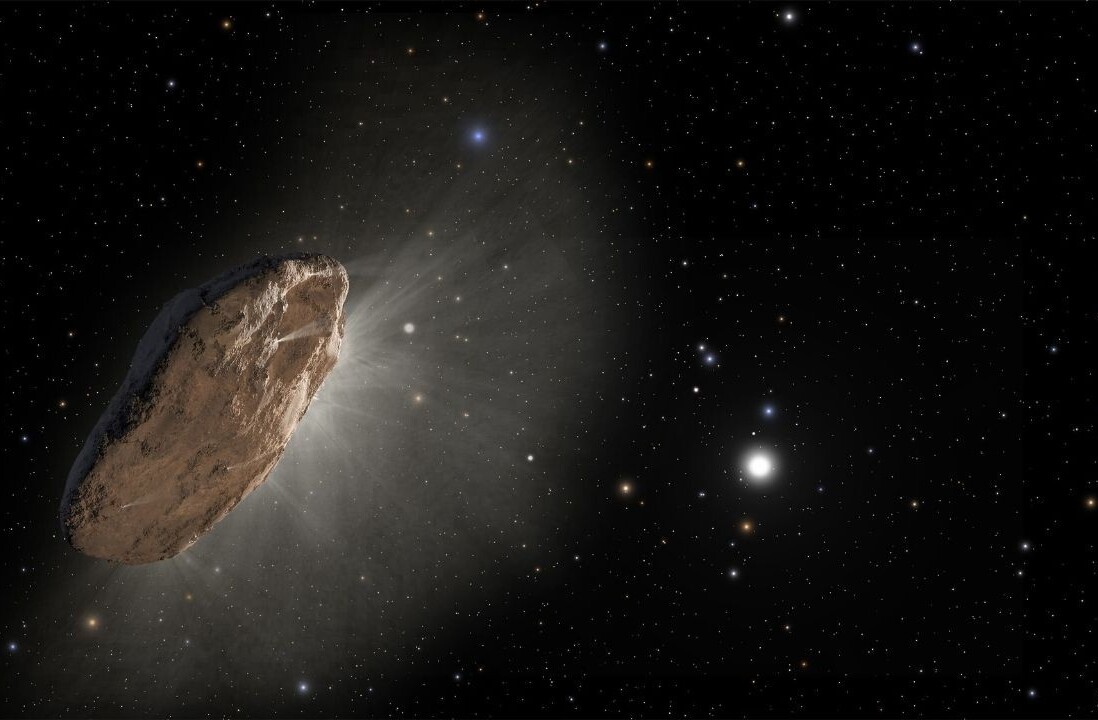Mars has engaged the human mind with thoughts of alien life for more than a century. We now know water lies beneath the Martian surface in the form of ice, and in small, briny pockets of liquid water sitting just a couple meters beneath the surface of the ruddy world.
In 2018, researchers announced finding an entire lake hidden under the surface of Mars, a report greeted with a degree of skepticism from some circles within the scientific community. A new study not only confirms the presence of the Martian lake originally reported, but this research also found three additional, smaller, lakes surrounding their larger companion in the Ultimi Scopuli region of Mars.
“We identified the same body of water, but we also found three other bodies of water around the main one. It’s a complex system,” says Elena Pettinelli, planetary scientist at the University of Rome.
The largest of these four alien lakes stretches 30 kilometers (18 miles) in length and 20 km (12 miles) wide, and it sits roughly 1.5 km (slightly less than one mile) beneath the surface of the world. These bodies are spread over an area 75,000 square kilometers (29,000 square miles) in size, larger than the state of West Virginia.
A salt lake… great
Mars was once a water-rich world, but liquid water cannot exist on the Martian surface today due to the thin Martian atmosphere. In order for water to remain liquid under current conditions, these subsurface lakes would likely need to be extremely salty.
If confirmed by other studies, these would be the first known liquid water lakes ever found on the surface of Mars, potentially making them abodes for Martian life.
When evidence for the first lake was reported two years ago, the discovery was based on just 29 observations, taken between 2012 and 2015. This new study is compiled of the 134 observations carried out from 2012 to 2019.
“While it is not possible for water to remain stable on the surface today the new result opens the possibility that an entire system of ancient lakes might exist underground, perhaps millions or even billions of years old. They would be ideal locations to search for evidence of life on Mars, albeit very difficult to reach,” the European Space Agency reports.
Of course, the same high concentrations of salt that keep this water from freezing could also present its own challenges to life. On our own world, life thrives in the salty oceans of Earth, but few forms of life are able to withstand extreme salty conditions found in places like the Great Salt Lake.
Experiments show it takes a 50 percent solution of the salt sodium perchlorate to keep water in its liquid form at -30 Celsius. In the even colder temperatures likely to be found in the smaller lakes, another salt — calcium perchlorate — would be needed to keep water from freezing at temperatures as low as -77 C (-106 F).
“Perchlorates are ubiquitous in the Martian soil, and we thus hypothesized that a similar process may have occurred in our study region. Laboratory experiments… convincingly demonstrate that brines persist for long periods of time also when temperatures drop below the [lowest possible melting point for a substance], suggesting that, once formed, it is difficult for brines to freeze,” Pettinelli explains.
And, terrestrial life does not fare nearly as well in a calcium-rich environment as it does with sodium.
“There’s not much active life in these briny pools in Antarctica. They’re just pickled. And that might be the case [on Mars],” explains John Priscu, an environmental scientist at Montana State University.
However, some extremophiles have evolved to exist in briny environments of up to 30 percent salt content. Halobacterium (“salt” or “ocean bacterium”) requires such conditions, as their proteins will not function outside the rich ionic environment provided by salt.
Questions also remain whether Mars is able to deliver enough heat to keep the lakes in a liquid state, or if the deposits of water may be closer to slush.
Pass the salt?
The Mars Express spacecraft, equipped with the Mars Advanced Radar for Subsurface and Ionosphere Sounding (MARSIS) instrument, probed beneath the frozen surface of the south pole of Mars, recording data on the subsurface bodies of water.
Radio signals from the robotic observatory (mostly) penetrate through the upper layers of the crust, and some are reflected back to detectors on the craft. By studying how these signals are reflected, astronomers determine what sort of materials — rock, water, ice, etc., lie at various depths.
“Our results strengthen the claim of the detection of a liquid water body at Ultimi Scopuli and indicate the presence of other wet areas nearby. We suggest that the waters are hypersaline perchlorate brines, known to form at Martian polar regions,” researchers describe in an article detailing their study, published in Nature Astronomy.
A similar technique is used to find subglacial lakes on Earth, such as Lake Vostok in Antarctica.
I prefer lakes, streams, and ponds to the sea. My people left the oceans for a reason and have since preferred their salt from shakers rather than brine. ― Thomm Quackenbush, Holidays with Bigfoot
In February 2021, the Tianwen-1 mission, developed in China, will enter orbit around the Red Planet, and deploy a rover to the Martian surface. Instruments onboard these vehicles will examine the world for additional signs of water and any lifeforms which may call Mars home.
There may not be much living in the frozen subglacial lakes of Earth, but even here, organisms find a way to eek out an existence. The discovery of life on another world, no matter how primitive, would herald a new age in our understanding of the Universe.
This article was originally published on The Cosmic Companion by James Maynard, founder and publisher of The Cosmic Companion. He is a New England native turned desert rat in Tucson, where he lives with his lovely wife, Nicole, and Max the Cat. You can read this original piece here.
Astronomy News with The Cosmic Companion is also available as a weekly podcast, carried on all major podcast providers. Tune in every Tuesday for updates on the latest astronomy news, and interviews with astronomers and other researchers working to uncover the nature of the Universe.
Get the TNW newsletter
Get the most important tech news in your inbox each week.









